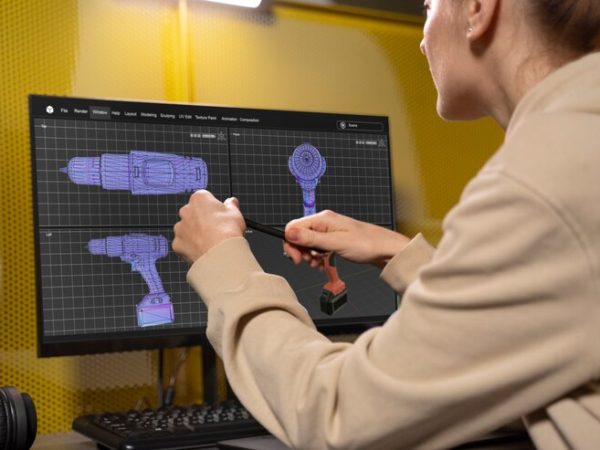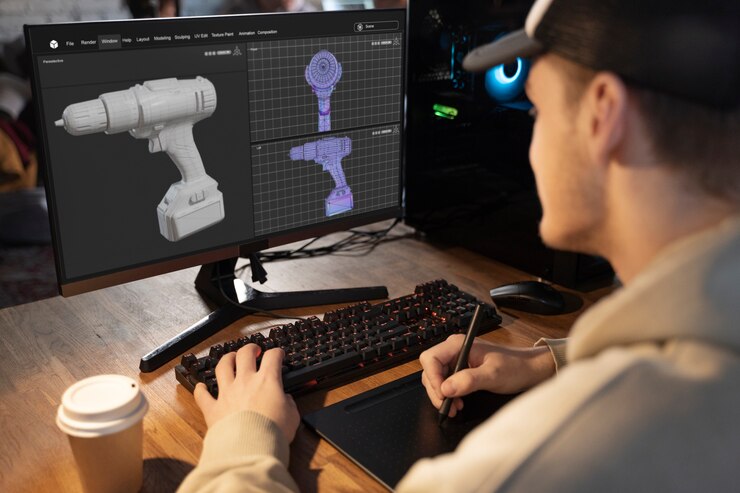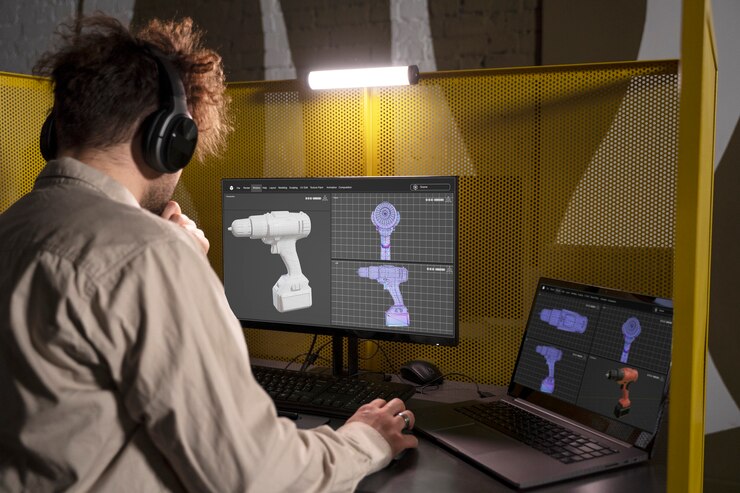13
Nov

A 3D scanner is very similar to a camera. The camera captures images in 2D and the scanner does it in 3D. It captures all the details of the shape and creates a very detailed image. These scanners work by projecting light onto an object and capturing the reflection. This creates the XYZ coordinates that will reconstruct the image. 3D scanners are very practical and can be used to make objects for everyday use and even technical parts for cars and planes.

This is a technology that takes millions of dots or measurements per second by projecting light. The light reflects from the dots back to the scanner’s sensor and it recreates the shape and geometry of the scanned object. These are very accurate scanners and are perfect for very detailed objects with clear surfaces.
However, these lasers also have their drawbacks. They’re not a good scanner technology for portable scanners. The dots need to be stable and the source needs to be standing still at a close distance from the object. It might not work on shiny or clear surfaces as well. In case you want to use them on some, you’ll need to add reflective markers.
But this brings in more work because you have to completely remove the markers after the scanning is done. Also, the dots can damage human eyes. That’s why you should take all the safety precautions to keep your eyes safe. Make sure you check the manufacturer’s instructions and see what the best way of doing that is. If you buy a high-quality, advanced 3D scanner for a 3D printer, the chances of hurting yourself are lower.
These devices are also known as white light or blue light scanners. They have a projector with 2 cameras, one on each side. Once you place the object and activate the scanner it produces a patterned light that falls over it. This way the cameras capture several images from different angles by seeing how the object deforms the light. Once it’s done, the images are combined forming the 3D scan.
These scanners can be stationary and portable. They are one of the most popular technologies when it comes to handheld scanners. They’re commonly used in medical applications because this technology is safe for animals and humans. They will give you a great scan even if the object is slightly moving.
To capture a 3D scene, depth-sensing cameras use infrared to project a field of dots on the object. They’re a very budget-friendly option and are beginner-friendly. However, the resolution and accuracy can be low and some of the details from the scan can be lost. Their accuracy will decrease if they’re too far from the object or if the camera is placed at a steep angle.
Photogrammetry is a type of scanner technology that uses photographs to take precise measurements of the object. The scanning is done by taking several overlapping photos of the object or a person and converting them into a 3D model. It also includes several different computer algorithms.
Given that current smartphone cameras can take and combine a large number of images, this is the most popular technique for producing a 3D scan. However, if you’re using it for serious business applications you might get disappointed with the result because this is the least accurate technique of them all.
Light detection and ranging sensors are another option. You can often find them on the newest versions of iPad Pro or iPhone Pro, and other more sophisticated smartphones and devices. This is a good technology for occasional scanning. It’s less detailed because they have fewer scan points and you’ll need to additionally work on the scan to remove gaps in the mesh. This is more time-consuming, but it can get the job done.

Before making a decision and buying your first 3D scanner for a 3D printer, there are several things to consider and the environment where you’ll be scanning is one of them. If you’re working on complex objects, you’ll need a versatile scanner. If you’re scanning in remote locations, you’ll need a device that has long-lasting batteries (and some spares).
Scanning indoors is also very different from scanning outdoors. In the open, humidity and the changing light can often be an issue. Also, larger and more complicated objects will need to be scanned with a mounted scanner. In some cases, like extremely hot temperatures, some scanners can overheat and lose their accuracy. The best solution is to keep them away from direct sunlight.
With so many 3D scanners on the market, some are easier to manage than others. If you’re new to this technology, it’s best if you choose something versatile, lightweight and with no cables. The wired versions of scanners often need calibration that many beginners don’t know how to set up.
Keep in mind that if the scanner is not wireless, you’ll need to carry around some kind of PC to capture all of the data you’ll collect. Also, choose a lightweight scanner so you can carry it around comfortably. The software is also important. Choose a simpler one that comes with good instructions and good settings.
Knowing what you’ll be scanning the most will help you choose the scanner with the proper range. If you’re working with larger objects like cars or trains, you can benefit the most from LiDAR scanners. If you’re more comfortable with smaller items, you can get the job done with handheld scanners.
The accuracy tells you how close the scanner can recreate the object into a virtual form. This is an important aspect when working with highly detailed items that need to be functional when done. Target-based scanning is good for this purpose because it gives you plenty of accuracy.
Resolution is responsible for capturing the smallest details and smallest distances between two captured points. It’s very important in VR, jewellery making, animation and forensics. Remember that high-resolution data takes longer to process especially if you have a slower PC.